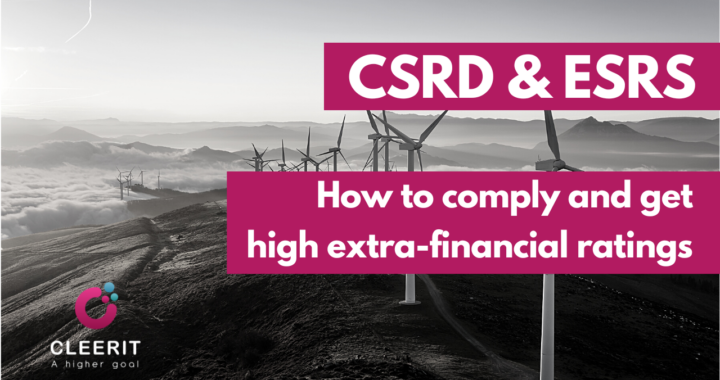In this section and on our LinkedIn page, we publish information aimed at helping you prepare for CSRD and learn to navigate the sustainability reporting framework ESRS.
As with other important legislative acts, ESRS is a new code for sustainability reporting with the EU taking the lead and likely becoming the template for many countries outside the bloc – at least for companies keen to show the world that they have state-of-the-art sustainability commitments.
We have analyzed and digitized the entire ESRS framework and count approx. 1000 disclosure points whereof 30% are metrics and 70% are narrative disclosures.
What you will have to report is subject to materiality assessment – and you will also be invited to disclose your own indicators, in addition to those already listed in the ESRS – so the number of disclosure points will be different for different companies.
But one thing is clear, it will take you at least a year to prepare, so don’t wait, get started now.
There are different types of Disclosure Points
➡ Processes, mechanisms and policies expected to be in place
ESRS lists a certain number of processes, mechanisms and policies, and asks you whether you have them in place or not.
Here you can only answer Yes or No. If you answer yes, you will be invited to describe How.
If you answer Yes without this being true, it will be as unlawful as stating that you do not have any outstanding debts in your balance sheet if you do.
And this will not go unnoticed since your report will be integrated into the annual report and needs to be audited.
➡ Impact, risk and opportunity management
ESRS also asks you to list and describe your material sustainability impacts, risks and opportunities, based on a list of topics, as well as the related policies, targets, actions plans, resources and metrics you have in place to manage these.
You will need to describe this as required by the Minimum Disclosure Requirements set out in ESRS 2 sections 4.2 and 5.
Basically, it means that you need to describe what you do, why you do it, who is responsible, when it’s happening, what resources you allocate for goal reaching, and how you are progressing.
Transparency is a key driver for change and the legislator knows that. So here there is no room for cheating if you do not want to risk being accused of greenwashing.
➡ Metrics
Finally, there are the metrics to show the world how you are progressing. But that’s actually the easy part. And they account for only 30% of all disclosure points.
With ESRS, the devil is in the detail. That’s why we regularly analyze detailed disclosure points
First out in our new series “CSRD & ESRS – How to comply and get high extra-financial ratings” was a close-up on the ESRS metric S1.97.b “Total remuneration ratio”, or “CEO employee pay ratio” or “Excessive CEO pay ratio” as it’s sometimes called.
We had a look at why it’s important, how it’s interpreted and how to set a sustainable target. You can read about it here >>
